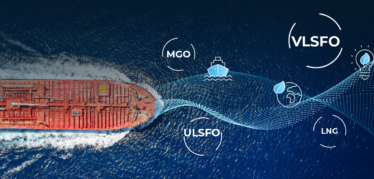![]()
This is a guest blog post by the North American Marine Environment Protection Association.
As the world becomes more interconnected, trade has never been more important. The accelerated pace of global society is reflected in a greater demand for goods and services to be transported faster and more efficiently every day. To do so requires maritime shipping.
The maritime shipping industry is the engine of global trade. Indeed, without it, international trade would not exist as it does today, if at all. Shipping accounts for roughly 90 percent of all global trade, representing over 14 trillion dollars in 2019. According to data from Clarkson’s research, the global merchant fleet of vessels over 100 gross tons has reached the 100,000-ship milestone for the first time. Of the 100,001 ships in total, the average age is 21.7 years. The estimated total value of the world’s fleet is $976 billion. It is the most cost effective, environmentally benign, and most efficient mode of transportation for bulk commodities, including agri-products, petroleum, coal, iron-ore, electronics, finished goods, clothing and more.
Shipping also proves to be the most effective mode of transportation for medical supplies and sensitive pharmaceuticals like vaccines, since it allows them to be transported at their required temperature for longer distances and in larger quantities than air travel. During the pandemic, the transportation of vaccines against the COVID-19 virus has been especially critical. According to IATA, 3.5 million metric tons of pharmaceuticals are shipped by ocean each year, compared with 0.5 million metric tons by air. According to Alan Kennedy, founder and executive director of TEAM UP, an organization that focuses on pharma supply chain issues, it is also 80 percent less expensive than air transport.
Maritime shipping is also the most environmentally friendly option. According to Freightos, two tons shipped for 5,000 kilometers by ocean freight will lead to 150 kg of CO2 emissions, compared to 6,605 kg of CO2 emissions by air freight. Although shipping is responsible for the transportation of the vast majority of goods, it is the mode of transportation that contributes the least to atmospheric emissions per ton.
However, though the shipping industry is the most efficient, economically viable, and environmentally benign mode of trade, it is not without its impacts. Despite how it compares to other modes of transportation, it still contributes to about three percent of total global CO2 emissions.
The shipping industry faces multiple hurdles as it moves towards decarbonization. However, various solutions are underway in the industry to reduce emissions, fuel consumption, and increase sustainability, including wind, hydrogen, biofuels and more.
There is a call for increased collaboration across sectors of the shipping industry, from ports to ship designers to ship owners. As such, throughout the industry, there are various initiatives to increase collaboration and transparency. A few of these are the Global Maritime Forum, the Sustainable Shipping Initiative (SSI), and the Zero Emission Ship Technology Association (ZESTAs).
NAMEPA, a marine industry-led organization of environmental stewards preserving the marine environment by promoting sustainable best practices and education, supports these initiatives to reduce shipping’s impacts on the environment. NAMEPA members are a vital part of the sustainability initiatives and pathways that are being developed to meet the 2030 and beyond goals as an industry. Pollution prevention, climate change awareness, and marine environment protection are crucial to the strategies of NAMEPA industry members. For example, last year’s IMO 2020 Sulphur cap was planned over ten years in advance to decrease the environmental impacts of marine fuel, and NAMEPA members were among those who helped make this radical transition a success.
The efforts made by maritime industry-led groups and companies will be essential in implementing more sustainable practices for the foreseeable future in the shipping sector. The industry can only be improved by the people and organizations who work within it.
Finally, it is crucial that the public be aware of the shipping industry’s intrinsic nature in their day-to-day lives. Through that awareness, global society can better understand its challenges as it moves towards decarbonization and sustainability and what solutions it is presenting. Only through education and understanding can the public influence how the shipping industry operates and hold it accountable to push for more environmentally sustainable trade.



 Giftson Eliyesar
Giftson Eliyesar
 Hongbeom Park
Hongbeom Park
 Oliver Kirkham
Oliver Kirkham